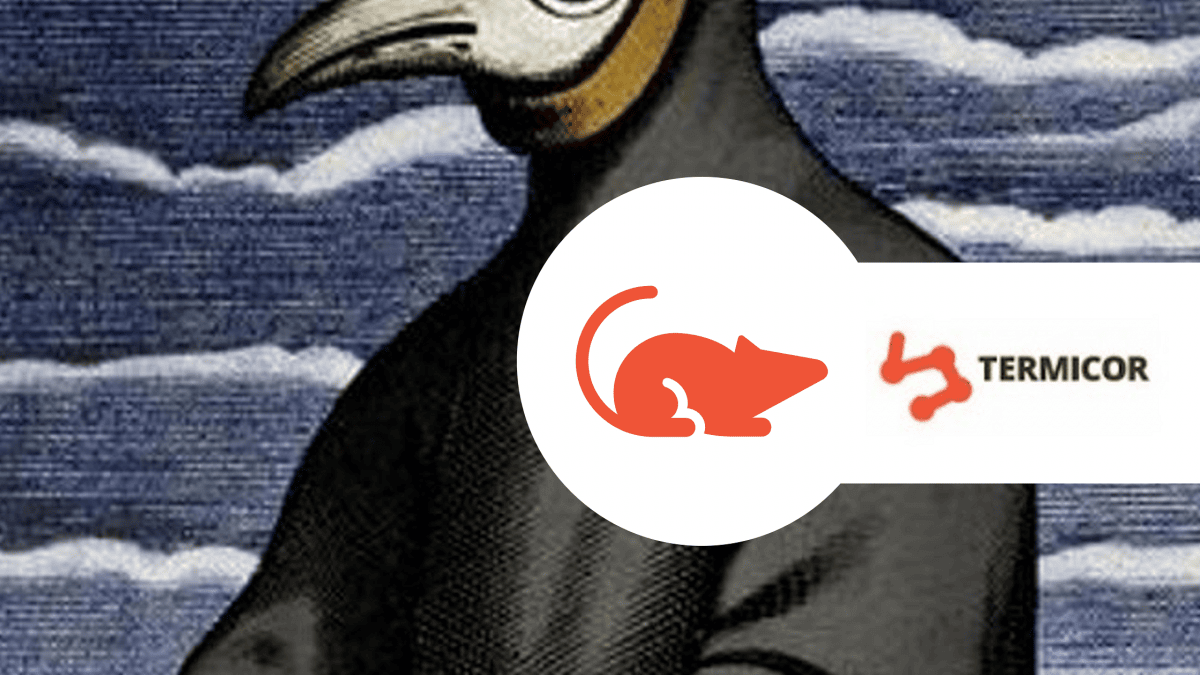To talk about plagues throughout history, it is mandatory to talk about the most famous plague of all time: the plague. As it could not be otherwise, much has been said about this plague, films have been made, books and documentaries have been written that have explained the different occasions in which this plague has decimated entire populations, the causes of its spread and the methods used at the time to eradicate it.
At Termicor we are passionate about our work, which is why we also like to learn about our enemy, plagues, throughout history, and how humanity has been able to overcome and survive all of them.

Talking about plague from the perspective of pest control implies addressing a highly contagious disease that has affected humanity for centuries and has required constant efforts to control and prevent it. The plague has been transmitted primarily through rat fleas and has manifested itself in three main forms: bubonic, septicemic, and pneumonic. Below, we will explore how pest control has been essential in the fight against plague throughout history.
Identification of vectors and reservoirs: The first step in controlling the plague is to identify the vectors, which are rat fleas, and the reservoirs, which are the rodents that carry the bacterium Yersinia pestis, responsible for the disease. Pest control focuses on the elimination or reduction of these populations.

Rodent control: To prevent the spread of the plague, it is crucial to control the populations of rats and other rodents that carry the bacteria. This is achieved by implementing measures such as traps, poisoned baits, and biological control using natural rodent predators.
Flea Control: Fleas are the main vectors of plague, as they transmit the bacteria from rodents to humans. Pest control also focuses on eliminating or reducing flea populations. This can be achieved through the use of insecticides, chemical treatments on infested areas, and personal hygiene measures to prevent flea bites.
Surveillance and early detection: Pest control involves constant surveillance of rodent and flea populations, as well as early detection of human cases of plague. This allows for a quick response to contain outbreaks before they spread.
Education and awareness: Pest control is not just about physical measures, but also about educating the population on how to prevent exposure to rodents and fleas. This includes tips on food storage, proper trash disposal, and the importance of keeping inhabited environments clean.
Medical treatment: Despite all pest control measures, plague can still affect people. In these cases, early diagnosis and proper medical treatment with antibiotics are essential to prevent the spread of the disease.
Animal vaccination: In some plague-prone areas, vaccination of pets and livestock is carried out to reduce the risk of transmission of the disease from animals to humans.
Pest control plays a critical role in the prevention and control of plague by reducing vector populations and reservoirs, as well as by educating the population on prevention measures. Although plague has decreased significantly in prevalence over the years, it remains a concern in some regions of the world, and constant surveillance and pest control measures remain essential to prevent outbreaks and protect public health.

Pest control is essential, not only to avoid the nuisance that insects can cause or the repulsion they can cause us, but also to prevent possible diseases that can be transmitted.
At Termicor we are professionals in pest control. Call us to request a no-obligation inspection. Click here


